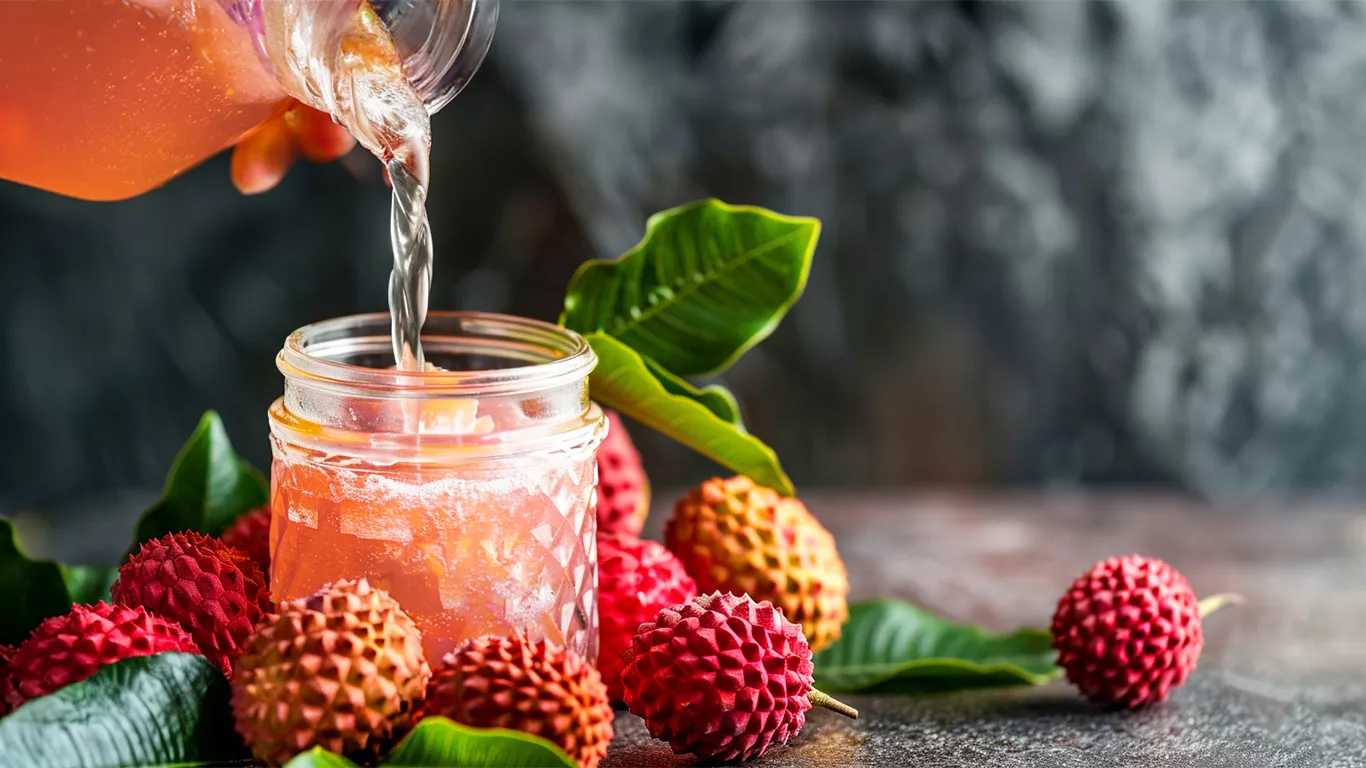All About Litchi - Its Production in India & More
Litchi is a round, beautifully reddish-brown fruit with a bumpy covering. And visually, we are bound to be fascinated by it. But once you bring it home, clean and open it carefully, the red sheds away to reveal a pearly white treasure that lies inside. One bite of that juicy flesh and you’re hooked! Scientifically known as Litchi chinensis, litchi is often denoted as a tropical fruit and is enjoyed worldwide, both fresh and canned. That said, litchi are essentially summer fruits that take over the market the moment heat settles in. If you are intrigued by the facts about litchis and are curious to learn how this glorious fruit first arrived in our country, then you are at the right place!
Historical Background of Litchi in India
Being a seasonal fruit, litchi is quite common and highly revered in India. Its story, however, does not begin here. Intriguing as the fruit itself, litchi is first recorded in the faraway, fertile lands of Southern China. Over the course of time, this fruit made its way to the Indian subcontinent in the 18th century through Burma (now modern-day Myanmar).
With the unique exotic taste of the fruit, it wasn’t long before it became a crowd favourite within the country. Litchi thrives in the country’s warm, tropical climate. The growing demand for fruit helped push for litchi cultivation in several parts of the country itself. From being a rare exotic fruit, its high demand and growth in agricultural practices have made litchi a staple you may find across markets the moment summers hit the country.
Major Litchi-Producing Regions in India
Now that we know the fruit is grown extensively within the country, where exactly is lychee grown in India? Let’s find out! While China is still the leading producer of litchi worldwide, India comes in close second. As we discussed above, litchi production in India is facilitated due to the country's diverse climate and geography. Its cultivation spans across regions that equally contribute to the production of the fruit.
Initially, when the agricultural practices were still new with respect to the fruit, litchi farming in India was restricted to provinces such as Jammu and Kashmir, Uttar Pradesh, as well as Madhya Pradesh. However, the increased market for the fruit led to its agricultural extension into other states like Bihar, Jharkhand, Orissa, Punjab, Chhattisgarh, Assam, and so on.
Cultivation Process of Litchi
While the fruit might look a bit rustic on the outside, it requires a delicate balance of environmental conditions and meticulous agricultural practices to grow well. Here is a simple 6-step guide to understanding the cultivation process of Litchi in India:
1. Land is prepared for Cultivation
It is levelled by ploughing the field and establishing preventative measures such as windbreakers. This helps prevent water stagnation and future damage to the fruit from environmental factors.
2. Sowing the Plant
The litchi plants are carefully sown in the tilled, fertilised soil a little after the monsoon season. This process may last between August, September and November at times.
3. Propagation for a Healthy Plant
Litchi can be grown from both seeds and branches. The latter, or air-layering, is the preferred method for commercial purposes. Once the branches sprout roots, these can be then planted in a nursery.
4. Pruning for Growth
An important part of horticulture, pruning involves the strategic removal of branches or leaves to support growth. While litchi trees do not require extensive pruning, minimal or light pruning is encouraged to train young trees for shape and shoot growth.
5. Consistent Irrigation for Health
Ensure that the trees are irrigated regularly, especially while the trees are still young. Later, the plants can be watered weekly or biweekly based on the tree's mature growth stages.
6. Harvesting a Ripe Fruit
As the fruit matures, it will turn from a young green colour to a smooth reddish pink hue. This is when they are harvested in batches with a few leaves and stems.
Varieties of Litchi Grown in India
One of the lesser-known facts about litchi is that it is cultivated in a range of varieties. Yes, each of which has its own distinct flavour profile, appearance and even production needs. Here are a few common types of litchi fruit farmed in India:
Shahi: Large and exceptionally sweet litchi that is cultivated in Bihar
China: Smaller in size with a flavour profile ranging between sweet and tart
Saharanpur and Dehradun: These litchis are named after the regions they are produced in.
Muzaffarpur: Found in Orissa, Bihar and Bengal, muzaffarpur litchis have an intense taste.
Late Seedless: As the name suggests, these are convenient, flavourful, seedless and sweet.
Nutritional Benefits and Uses of Litchi
While the plumpy flesh of the litchi mostly contains water, the fruit also has a diverse set of nutrients that can pose a variety of benefits for an individual. It is rich in vitamins and minerals such as vitamin C, potassium, phosphorous, calcium and flavonoids. These elements can help promote a healthy immune function when added to a balanced diet. Amazing facts about litchi are that the fruit is just as versatile as it is naturally sweet. This makes it a seamless addition to your fruit bowls, salads, smoothies, desserts, drinks and so on.
Through our explorations in the history of litchi farming in India, we delved into its humble beginnings as an exotic import to the beloved homegrown fruit it is today. These types, cultivation processes and nutritional facts about litchi help us further understand the significance of the fruit in our country’s culture, history and agriculture. To this day, litchi remains a cherished tropical treat that is best enjoyed fresh to savour its luscious and nutritious properties that beckon the onset of summer with every bite.
To enjoy these benefits in a convenient and delicious form, B Natural litchi Juice provides a high-quality option made from real litchi, offering all the health benefits without any added preservatives.
FAQ
1. What are the benefits of eating lychees?
The health benefit of litchi includes boosting immunity, aiding digestion, and promoting glowing skin. Packed with vitamins and antioxidants, litchi supports heart health and keeps you refreshed.
2. Which climate is suitable for litchi?
Litchi thrives in a warm, subtropical climate with moderate humidity. It requires cool winters and hot summers, with temperatures ranging from 20°C to 35°C, and well-drained soil for optimal growth.
3. What is the rank of India in litchi production?
India ranks second globally in litchi production, contributing significantly to the world's supply. Bihar, West Bengal, and Assam are the leading states cultivating this delicious tropical fruit.
-0102?fmt=webp-alpha)





